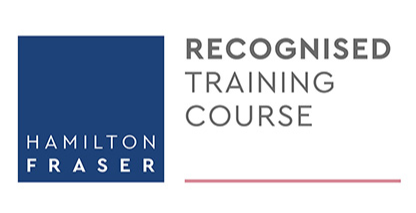A case study of facial volumisation to lift sagging tissues with Juvederm Voluma via cannula
By Fabrizio Equizi
Abstract
The features of a youthful face are depicted by curves and arcs. A ‘young-looking’ face has round contours, high cheekbones and a well-defined jawline with smooth curves from the cheeks to the edge of the nose, without hollows. With advancing age the curves of the face start to change. Volume is lost from the cheeks, lines and wrinkles appear, lines and folds around the mouth deepen and skin becomes loose and descends below the jaw to form jowls. A major factor in this is loss of volume from the facial skeleton and fat pads. High volume fillers injected with a blunt cannula in strategic areas of the face is a safe and effective way of replacing lost volume and lifting sagging tissues
Introduction
This is a case study of a 60 year old female who shows signs of ageing as a result of volume loss from the face.
In this study it is shown that larger volume dermal fillers used to replace areas where there has been volume lost from the face is the key to rejuvenation.
A fresher look is achieved in this by the injection of a high viscosity, high G-Prime filler into volume depleted areas followed by multilayering with a finer grade filler to deal with some of the rhytids.
A total of 6mls of filler was injected in one session, using cannulae and needles with a touch up at 2 weeks.
The results are quite subtle, natural but undeniably fresher looking.
Case Presentation
The patient actually presented after her daughter had mid-face volumisation and cheekbone enhancement by myself after a bout of ill health. Her daughter was impressed by the lifting effect she noticed so she brought her mother down for consultation.
On examination the patient was Fitzpatrick 2 Glogau 3. Lots of signs of ageing were present
• Brow ptosis and laxity of periorbital tissues
• Static rhytids
• Mild skin dyschromia
• Descent of malar fat pad
• Jowl formation
• Deepening of nasolabials and marionettes
• Loss of lip volume and perioral rhytids
Using the Merz aesthetic scales she had
• Grade 3 brow descent
• Grade 2 glabella lines
• Grade 3 crow’s feet at rest
• Grade 3 infraorbital hollows
• Grade 2 sunken upper cheek
• Grade 2 nasolabials and marionettes
• Grade 3 lip wrinkles at rest
Management and Outcome
All treatment options were discussed from botulinum toxin and fillers to the various skin treatments that were available.
Surgery was not an option so it was agreed that in the first instance the plan would be to restore lost volume and soften the paracommisural and perioral wrinkles that bothered her the most.
After obtaining informed consent, the patient was photographed in frontal and 45 degree views. Emla was applied to anaesthetise the areas where the entry holes for the cannula were to be made and to the rhytids that were to be directly filled. Infraorbital and mental nerve blocks were given with 3% mepivacaine for the perioral work.
After half an hour the Emla was wiped off and the face thoroughly cleansed.
The volume fill was done first using Juvederm Voluma via a 25G 50mm TSK steriglide cannula. A 23G needle was used to make the entry holes.
The first hole was made over the zygoma in the region of a line drawn from the lateral canthus to the tragus. The cannula was inserted along the zygoma until it penetrated the malar fat pad. Filler was injected here and continued to be injected as the cannula was drawn back over the zygoma. 3 passes through the same hole were made to fan a narrow triangle from cheek to zygoma. This was repeated via another entry point about a centimetre below the first one.
One ml of Voluma was used in that area. Another entry hole was made lower down the cheek in the mid pupillary line and the cannula was used to fill malar fat pad and boost infraorbital margin and also to boost inferolateral orbit corner and zygoma. Half a ml was used for this and the process was repeated on the other side with a new cannula.
Using the cannula via an entry hole in the jowl another 0.5ml of voluma was deposited over and behind the angle of the mandible on each side.
The marionettes were filled using a slightly less viscose filler Juvederm 4. The area from the incisive fossa of the mandible to the marionette fold was filled by fanning with the cannula.
Finally a much lighter product, Juvederm Ultra 2, was injected with a needle to define the vermillion border and add a touch of lip volume. The lip wrinkles were filled using the multiple puncture technique, perpendicular to the rhytid, to deposit very small amounts of filler high up in the dermis. (10 degree needle angle). My first choice for fine lines is Juvederm Volbella but I had none at the time!
The paracommisural rhytids (cheek lines) were softened by cross-hatching the filler superficially over the cheek area.
Had patient budget allowed I would have also filled the temples and the lateral brows. I decided to leave the infraorbital hollows alone as there was risk of lower lid and malar oedema. Just filling the malar fat pad often causes improvent of the infraorbital area.
A follow up was done 2 weeks later for photography and a top up of 1ml volume to compensate for settling after the swelling had gone down.
The outcome was very satisfactory with a 1 or 2 point improvement in all the Merz Aesthetic Scales.
Discussion
A lot of filler was distributed over a wide area of the face. The rationale for this is the changes in facial volume with age. Coleman and Grover (2006) described several factors contributing to facial ageing. What we have addressed in this case study are
1. Skeletal remodelling
2. Subcutaneous fat redistribution and loss.
With advancing age the orbital sockets expand, especially in the inferolateral direction, and resorption of bone in the zygoma causing a loss of support of facial tissues. There is also bone resorption from the mandible and maxilla. This bone loss is partly responsible for tissue descent, jowl formation, nasolabial and marionette folds. The loss of bone support combined with repeated muscle contraction of orbicularis oris over the years contributes to the formation of perioral rhytids.

Loss of fat in the malar fat pad and descent of this fat pad, along with hypertrophy of the nasolabial fat pad also influences the appearance of the ageing face.

Juvederm Voluma is a viscose hyaluronic acid filler 20mg/ml that is heavily cross-linked for volume enhancement and tissue lift. When injected as described above the issues regarding bone loss and volume depletion have been addressed. The net result of this is lifting of sagging tissues, restoration of the youthful curves of the face and the restoration of more normal jaw line.
Juvederm 2 is a less viscose product and can be injected higher up in the dermis to lift out finer rhytids and restore some lip volume. As previously stated Volbella would have been my filler of choice for fine lines. It has the same Vycross technology as Voluma and is suited for the indications of both Juvederm Ultra 2 and 3
As can be seen in the photographs the restoration of volume has made a significant difference to the jaw line and the appearance of the face in general.
Also of note is the lack of bruising when a blunt cannula is used. The main reason for choice of cannula in the facial areas is safety. Intravascular injection of filler can have disastrous consequences and adverse events such as necrosis, strokes and blindness have been reported. (Lazzeri 2012)
Further gains in this case could be made with the addition of botulinum toxin and some skin work with lasers, peels, prescription skin systems, microneedling, PRP or radiofrequency.
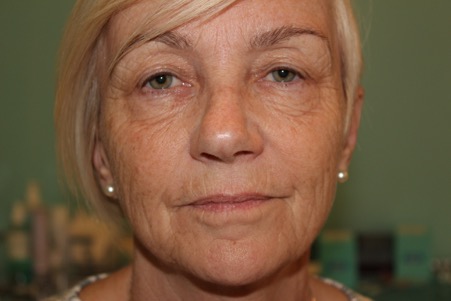
Pre-treatment
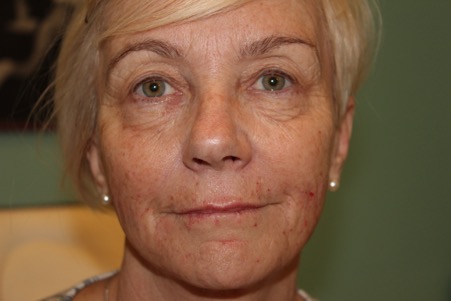
Immediately post treatment
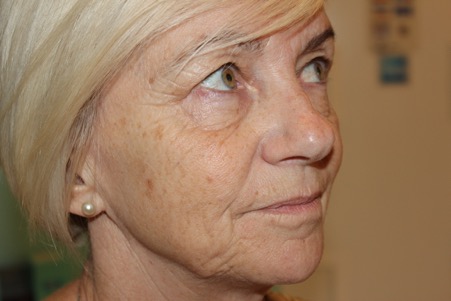
Pre-treatment
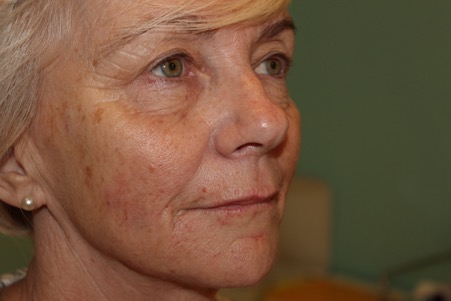
Immediately post treatment
References
Braz, André Vieira, and Thais Harumi Sakuma. “Midface Rejuvenation: An Innovative Technique to Restore Cheek Volume.” Dermatologic Surgery 38.1 (2012): 118-20. Print.
Camp, Matthew C., et al. “Changes in Facial Shape with Age: An Analysis with Three-Dimensional Imaging.” European Journal of Plastic Surgery 34.3 (2011): 167-74. Print.
Cattin, Teresa A. “A Single Injection Technique for Midface Rejuvenation.” Journal of Cosmetic Dermatology 9.3 (2010): 256. Print.
Coleman, S., A. Saboeiro, and R. Sengelmann. “A Comparison of Lipoatrophy and Aging: Volume Deficits in the Face.” Aesthetic Plastic Surgery 33.1 (2009): 14-21. Print.
Donofrio, Lisa M. “Fat Distribution: A Morphologic Study of the Aging Face.” Dermatologic Surgery 26.12 (2000): 1107-12. Print.
Gierloff, M., et al. “The Subcutaneous Fat Compartments in Relation to Aesthetically Important Facial Folds and Rhytides.” Journal Of Plastic, Reconstructive & Aesthetic Surgery: JPRAS 65.10 (2012): 1292-7. Print.
Khazanchi, Rakesh, Aditya Aggarwal, and Manoj Johar. “Anatomy of Aging Face.” Indian Journal of Plastic Surgery 40.2 (2007): 223-9. Print.
Lazzeri, Davide, et al. “Blindness following cosmetic injections of the face.” Plastic and reconstructive surgery 129.4 (2012): 995-1012.
Raspaldo, Herve, et al. “Upper- and Mid-Face Anti-Aging Treatment and Prevention using Onabotulinumtoxin A: The 2010 Multidisciplinary French Consensus – Part 1.” Journal of Cosmetic Dermatology 10.1 (2011): 36-50. Print.
Raspaldo, Herve, et al. “Lower-Face and Neck Antiaging Treatment and Prevention using Onabotulinumtoxin A: The 2010 Multidisciplinary French Consensus – Part 2.” Journal of Cosmetic Dermatology 10.2 (2011): 131-49. Print.
Roenigk, Henry H. “Treatment of the Aging Face.” Dermatologic Therapy 13.2 (2000): 141-53. Print.
Shaw Jr, Robert B., and David M. Kahn. “Aging of the midface bony elements: a three-dimensional computed tomographic study.” Plastic and reconstructive surgery 119.2 (2007): 675-681.

